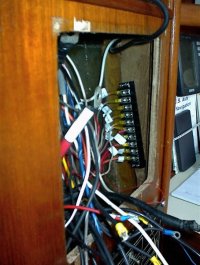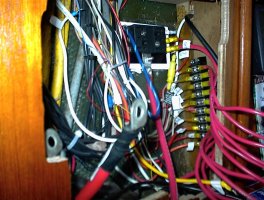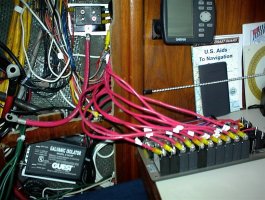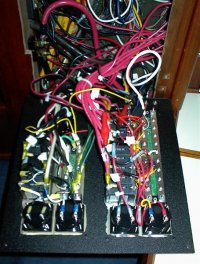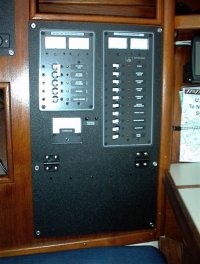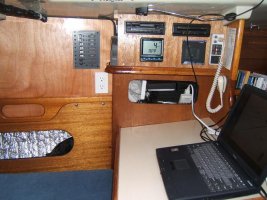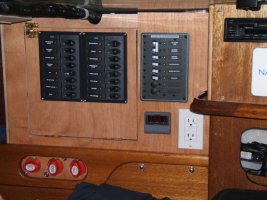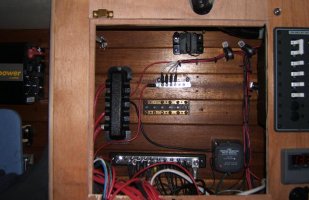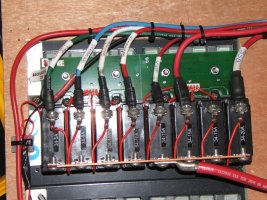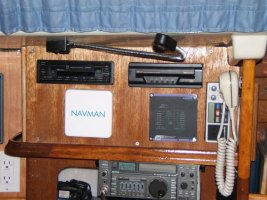Hi All,
I've been doing a bit of rewiring on my boat but am really surprised how difficult it is to get electrical connections onto the hot side of the breakers. All of the wires on my boat are fitted with the flat connectors with the hole rather than spade fittings. This means that you have to remove the screw completely from the breaker to put on a new wire - this requires a short stubby screwdriver (used sideways) and yes the screw inevitably falls down into the channel (like 3 or 4 times). I would like to redo the whole panel and would change all the connectors to spades so the screw doesn't have to be removed. I know these are not as reliable and the wire can pop off if the screw loosens. I looked at a friends Pearson 36 panel the other day & it's like a dream compared to the Ericson - every terminal is easily accessible & right there in front of you. On my Ericson panel the wires look like one big tumbleweed ball!!
On the same vein, has anyone hinged their panel so it's easily accessible rather than rely on the 4 screws?
Would appreciate any advice and particularly any pictures if anyone has done a rewiring job on their panel. I'm not sure how a stock Ericson wiring job looks as I'm sure with a 20 year old boat the previous owners have added wires willy nilly.
Thanks a bunch.
Steve Gabbott
E35/3 "Silent Dancer"
Vancouver
I've been doing a bit of rewiring on my boat but am really surprised how difficult it is to get electrical connections onto the hot side of the breakers. All of the wires on my boat are fitted with the flat connectors with the hole rather than spade fittings. This means that you have to remove the screw completely from the breaker to put on a new wire - this requires a short stubby screwdriver (used sideways) and yes the screw inevitably falls down into the channel (like 3 or 4 times). I would like to redo the whole panel and would change all the connectors to spades so the screw doesn't have to be removed. I know these are not as reliable and the wire can pop off if the screw loosens. I looked at a friends Pearson 36 panel the other day & it's like a dream compared to the Ericson - every terminal is easily accessible & right there in front of you. On my Ericson panel the wires look like one big tumbleweed ball!!
On the same vein, has anyone hinged their panel so it's easily accessible rather than rely on the 4 screws?
Would appreciate any advice and particularly any pictures if anyone has done a rewiring job on their panel. I'm not sure how a stock Ericson wiring job looks as I'm sure with a 20 year old boat the previous owners have added wires willy nilly.
Thanks a bunch.
Steve Gabbott
E35/3 "Silent Dancer"
Vancouver


